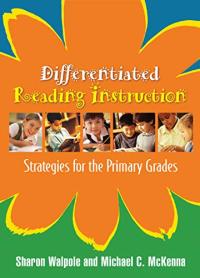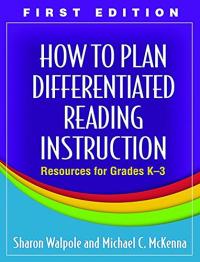Books by this author

This book guides teachers in grades 6-12 to strategically combine a variety of texts – including literature, informational texts, and digital sources – to meet their content-area goals and the demands of the Common Core State Standards (CCSS). It presents clear-cut ways to analyze text complexity, design challenging text sets, and help students get the most out of what they read. Practical instructional ideas for building background knowledge, promoting engagement, incorporating discussion and text-based writing, and teaching research skills are provided. Appendices offer sample unit plans for English language arts, history/social studies, and science classrooms. More than 20 reproducible coaching templates and other tools can be downloaded and printed.
Cracking the Common Core: Choosing and Using Texts in Grades 6-12

This book provides a research-based framework for making differentiated instruction work in the primary grades. It includes scientifically validated techniques for teaching each component of the beginning reading program. The authors describe how to use assessment to form differentiated small groups and monitor student progress; plan which skills to target and when; and implement carefully selected instructional strategies. Vivid classroom examples illustrate what differentiated instruction looks like in action in each of the primary grades. For additional helpful resources, including classroom-ready lesson plans, teachers can purchase the complementary volume, How to Plan Differentiated Reading Instruction: Resources for Grades K-3.
Differentiated Reading Instruction: Strategies for the Primary Grades

Offering step-by-step guidance to simplify planning and decision making, this book reviews the basics of differentiated reading instruction and provides detailed, ready-to-use lesson plans and materials to help teachers hit the ground running. Teachers get everything they need to implement four types of instructional groups over multiple three-week cycles. For fluency, vocabulary, and comprehension, lessons are based on popular, inexpensive trade books. For phonemic awareness and word recognition, dozens of reproducibles are provided, all in a convenient large-size format. The book can be used on its own or as a complement to Differentiated Reading Instruction: Strategies for the Primary Grades, which offers a complete introduction to the authors’ approach.
How to Plan Differentiated Reading Instruction: Resources for Grades K-3

This bestselling book gives preservice and practicing literacy coaches the tools they need to build a successful schoolwide reading program. The authors, well-known experts in the field, describe the literacy coach’s crucial, evolving role in today’s schools. They offer step-by-step guidelines for implementing curricula and assessments, selecting instructional materials, and planning for differentiation and intervention. Specific ways to support teachers by providing high-quality professional development are discussed. The book is grounded in state-of-the-art research on PreK-5 instruction and the characteristics of effective coaches. New to this edition: (1) Incorporates the latest research and instructional materials; (2) Expanded grade range now includes PreK and grades 4-5; (3) Content on RTI and the Common Core standards; and (4) Strategies for making professional development more responsive to teachers’ needs.
The Literacy Coach’s Handbook, Second Edition: A Guide to Research-Based Practice

When the goal is supporting excellent teaching, there is no “one-size-fits-all” approach. This popular practitioner resource and text helps readers navigate the many choices involved in developing and fine-tuning a coaching program that offers the best fit for a particular school. The authors draw on current research as well as their extensive experience in K-8 settings. They provide clear guidance (with helpful reproducibles) on: (1) Major coaching models and how to choose among them; (2) Applying principles of adult learning and motivation; (3) The role of reading assessment in coaching; (4) Balancing classroom-level, grade-level, and whole-school tasks; and (5) Special considerations in middle school coaching.